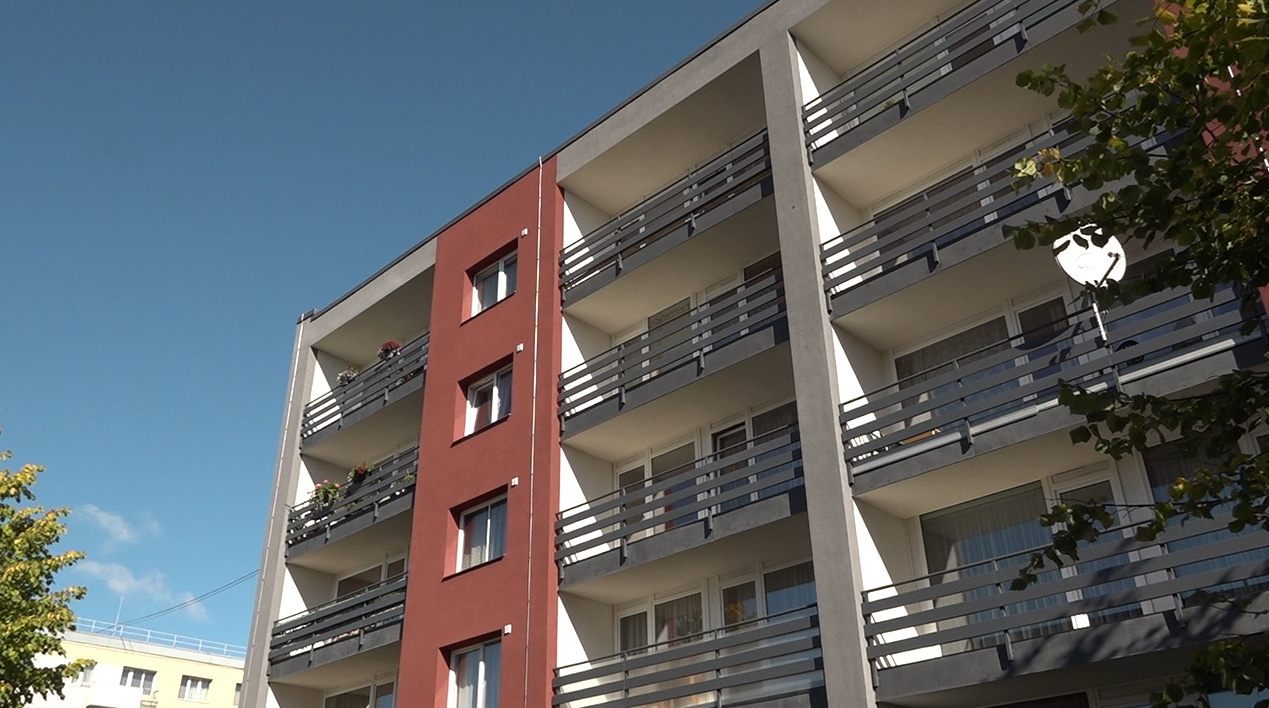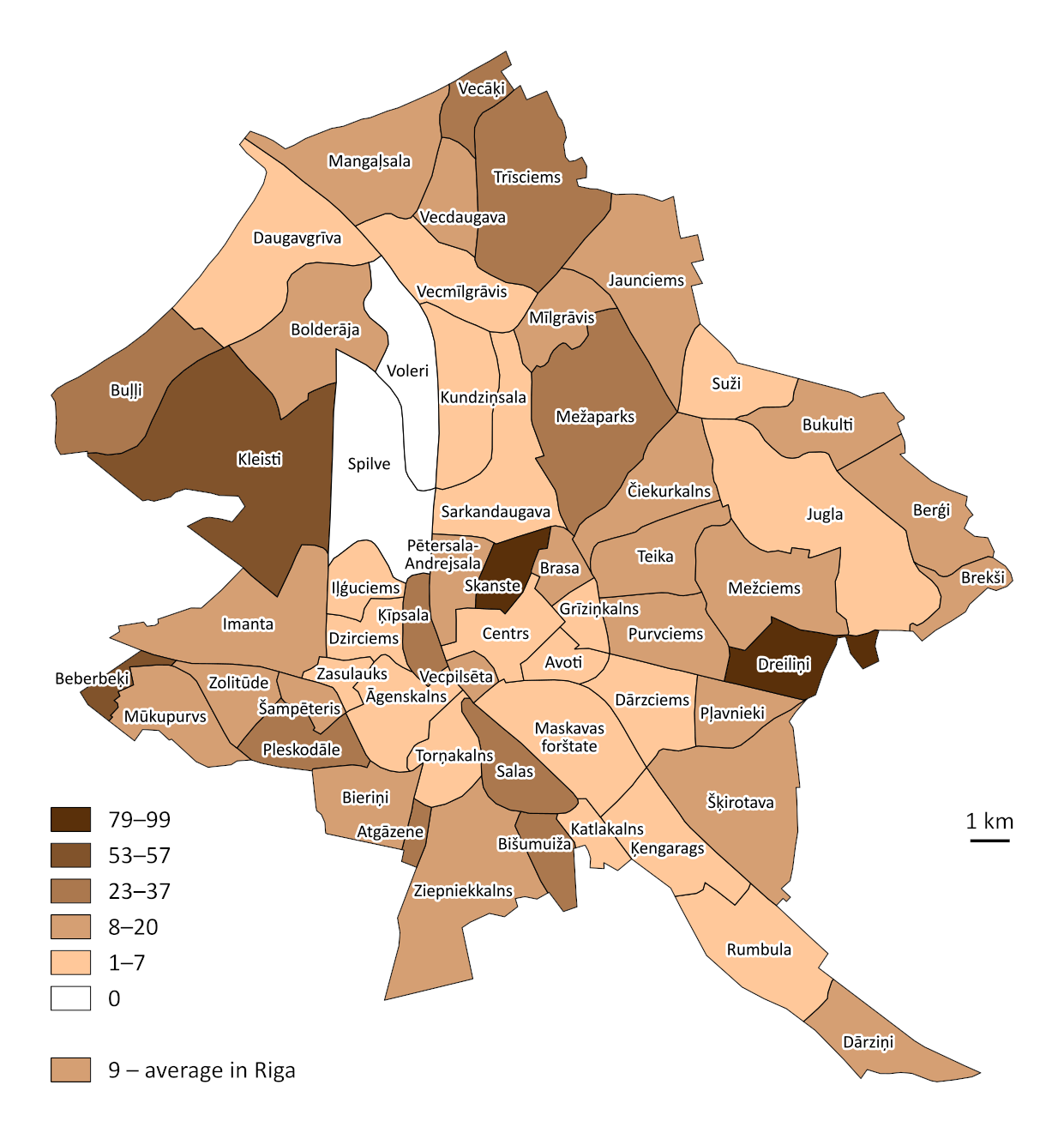The average living space per person of an occupied conventional dwelling is 32.3 m2, which is 4 m2 more than at the time of the Population and Housing Census 2011 (28.3 m2 in 2011).
The number of dwellings with less than 30 m2 per occupant has decreased by 21.1 % over the last 10 years: from 464.4 thousand in 2011 to 366.5 thousand in 2021. The number of dwellings with a floor space of 30 m2 or more per occupant increased by a third or 33.6 % (from 332.3 thousand to 443.9 thousand, respectively).
"The increase in the living space per occupant can be attributed to the decrease in the population, while the number of occupied dwellings has even slightly increased (807.8 thousand in 2011 and 811 thousand in 2021). The number of people living alone has increased significantly, and the floor space of dwellings has increased," said the CSB.
Largest living space is in Pierīga
The largest living space per occupant - 39.8 m² - is in Pierīga, which has the highest increase in living space per occupant since 2011 compared to other regions (by 5.95 m²). In turn, Riga has the smallest living space per occupant - 28.35 m², although it has the second highest increase in living space per occupant (by 4.4 m²). In Vidzeme the floor space per occupant is 34.3 m², in Zemgale - 31.5 m², in Kurzeme - 31.3 m², in Latgale - 30.9 m².
In all cities, except Jūrmala, the living space per inhabitant is below the Latvian average - that is less than 32.3 m². In Jūrmala it is 36.7 m² per inhabitant. The smallest floor space per occupant in the municipalities is in Aizkraukle municipality - 26.8 m², and the largest - in Garkalne municipality - 75.6 m² per occupant, which is more than twice the average in Latvia.
Average living space per occupant (density standard) in occupied conventional dwellings in cities and counties at the beginning of 2021 (square metres)
The highest number of dwellings was built in the 20th century (1960s and 1970s)
Less than a tenth (7.6 %) of all dwellings were built in the last 20 years, almost two thirds (59.1 %) were built between 1961 and 2000, and one third (32.6 %) - before 1961.
Of all the dwellings built in the last 10 years (26.7 thousand), almost a half (47.2 %) are in private houses, slightly more (48.3 %) in apartment buildings. Only 4.2 % of dwellings are in buildings with two dwellings (e.g. semi-detached houses).
Nearly one in four dwellings in Latvia is unoccupied
Of all conventional dwellings, 811 thousand dwellings or 76.2 % are permanently occupied, 252.9 thousand dwellings or 23.8 % are without permanent residents - vacant or reserved for seasonal use, as second residences or occupied by persons who are not usually resident population of Latvia. Since 2011, the vacancy rate has increased by 3 percentage points.
The highest share of unoccupied dwellings is among dwellings built before 1961, with 35.3 % of all dwellings built during this period being unoccupied. However, the share of unoccupied dwellings remains high in buildings built after 2010, with 34.2 % of new dwellings built in the last 10 years having no permanent occupants.
One third (35.6 %) of the occupied dwellings are located in Riga, 17.9 % - in the Pierīga region, 14 % - in the Latgale region, 12.3 % - in the Kurzeme region, 11.2 % - in the Zemgale region and 8.9 % - in the Vidzeme region.
The lowest share of unoccupied dwellings is in Riga (15 % of all dwellings), followed by Zemgale (24.5 %), Pierīga (26.1 %), Vidzeme and Kurzeme, each with 28.7 % of unoccupied dwellings, and Latgale, with 30.2 % of all dwellings in the region unoccupied.
Share of dwellings built in 2001-2020 in the total number of conventional dwellings in Riga neighbourhoods at the beginning of 2021 (as per cent)































